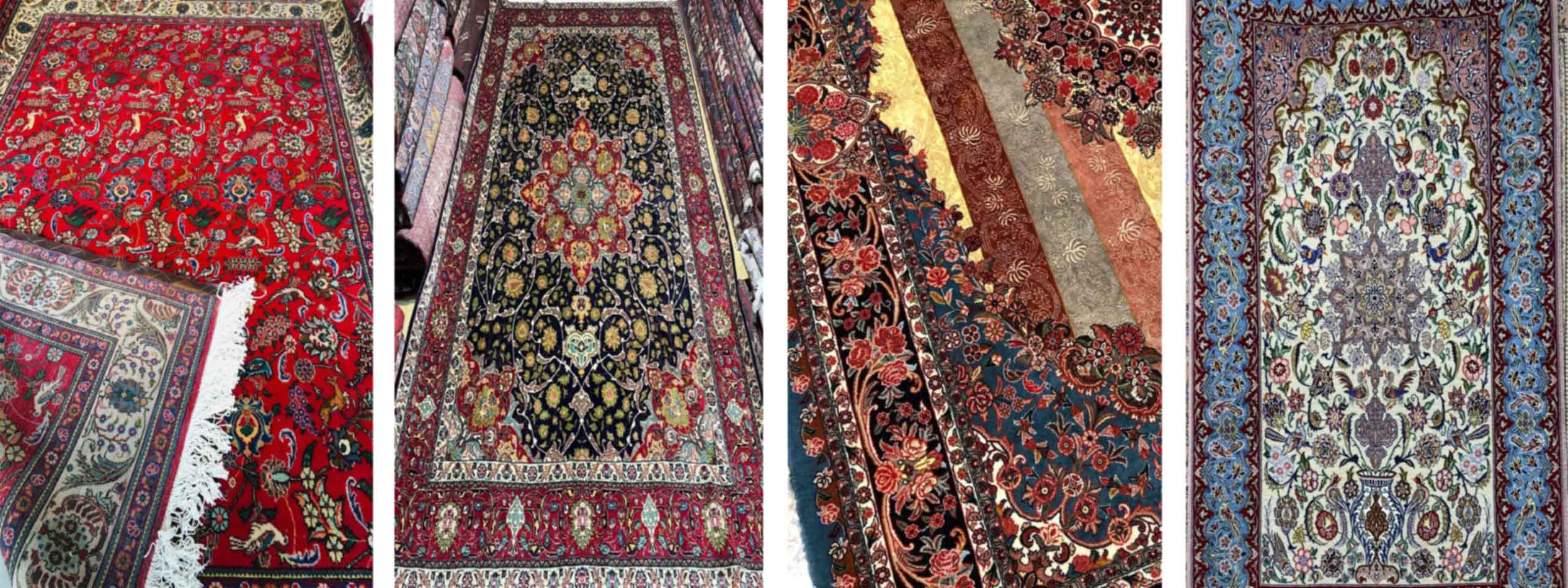In this article, we want to introduce different types of Persian rug designs. Usually when we learn more about an art and its characteristics, we also better understand and enjoy its beauty and implications. The Persian rug is one of the oldest arts in this region and is popular all over the world. Since one of the most important factors in the popularity of Persian rugs is the variety of designs and the specificity of its designs, in this article we also want to address the issue of rugs and briefly introduce some types of handmade rug designs. If you are interested in the subject of this article, read it to the end. It will definitely be interesting for you.
In general, different categories have been stated for design and motif in Persian rugs. According to the division, Persian rug designs are divided into 19 main groups and a large number of sub-designs, which are:
Shah Abbasi Persian rug designs (Safavid)
The basis of all Shah Abbasi designs is based on the use of the famous Shah Abbasi flower in this design. The use of this design is especially seen in the borders of rugs. The role of Shah Abbasi becomes very dazzling when combined with other motifs such as arabesque. There are different types of Shah Abbasi rug designs. Including Shah Abbasi Afshan, Shah Abbasi Lechak Toranj, Shah Abbasi Tree and etc.
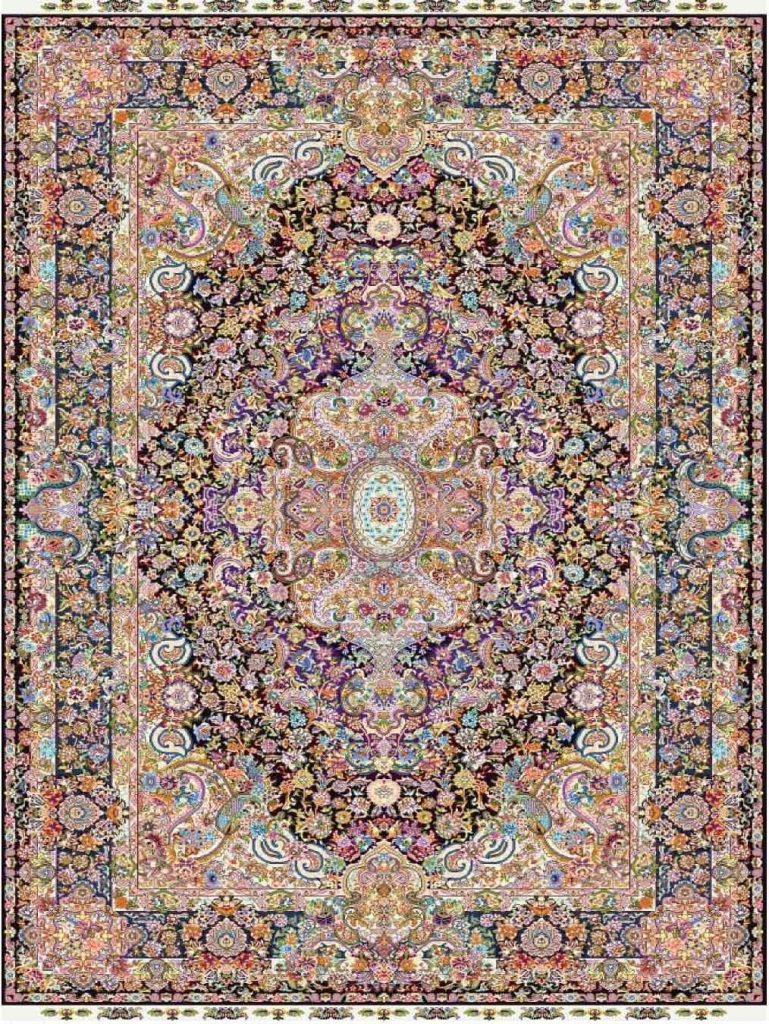
Islamic Persian rug designs (arabesque)
The main shape of this Persian rug design is rotating branches between the leaves. These branches are abstracts of the tree design. There are many types of Eslami (arabesque) and this pattern is usually repeated in most molds, but in some Persian rugs, this pattern is dominant. The most famous Islami is the torpedo mouth Islami. In this type of Islamic branch, the end of each branch is divided into two symmetrical parts and is shown as a dragon jaw, and on the stem of the branches, buds are decorated in different places, most of which are called Slim buds. Maybe the word Islami from Islam means sprout and maybe this word is a minor Islamic word and we know that this design has been used a lot in Islamic arts. This pattern is also very divided into subgroups in terms of changes and intrusions. Such as Eslami, Eslami Bandi, Eslami Shekasteh, Eslami Dragon Jaw, Eslami Lechak Toranj, Eslami Toranjdar.

Antiquities and Islamic buildings design of Persian rugs
These designs are inspired by buildings and tiles and geometric and decorative shapes of buildings. Throughout history, Persian rug designers have intervened in major designs and created sub-designs. The most famous of these works are Sheikh Lotfollah Mosque, Kofi Altar, Blue Mosque, Sheikh Safi al-Din Ardabili Shrine, Imamzadeh Mahroogh Gate, Gonbad-e-qabus, Shah Isfahan Mosque, Persepolis, Taq Bostan, Taq Kasra (Madain Porch), and other places.
Designs of Afshan on Persian Rug
In this design of Persian rugs, all the sections and patterns of the rug are completely connected. In such a way that it seems that the painter did not remove the pen from the paper from the beginning to the end of the drawing and created a continuous connection between the different parts of the motif. In other words, as the name of the designs of this group shows, all the flowers, leaves, and bands in this Persian rug design are scattered in the pattern of the rug. Afshan designs are generally designed in such a way that none of the flowers and leaves are symmetrical and there are no principles of symmetry. Bouquet Afshan, Animal Afshan, Toranj Afshan, Khataei Afshan, etc. are types of this design.
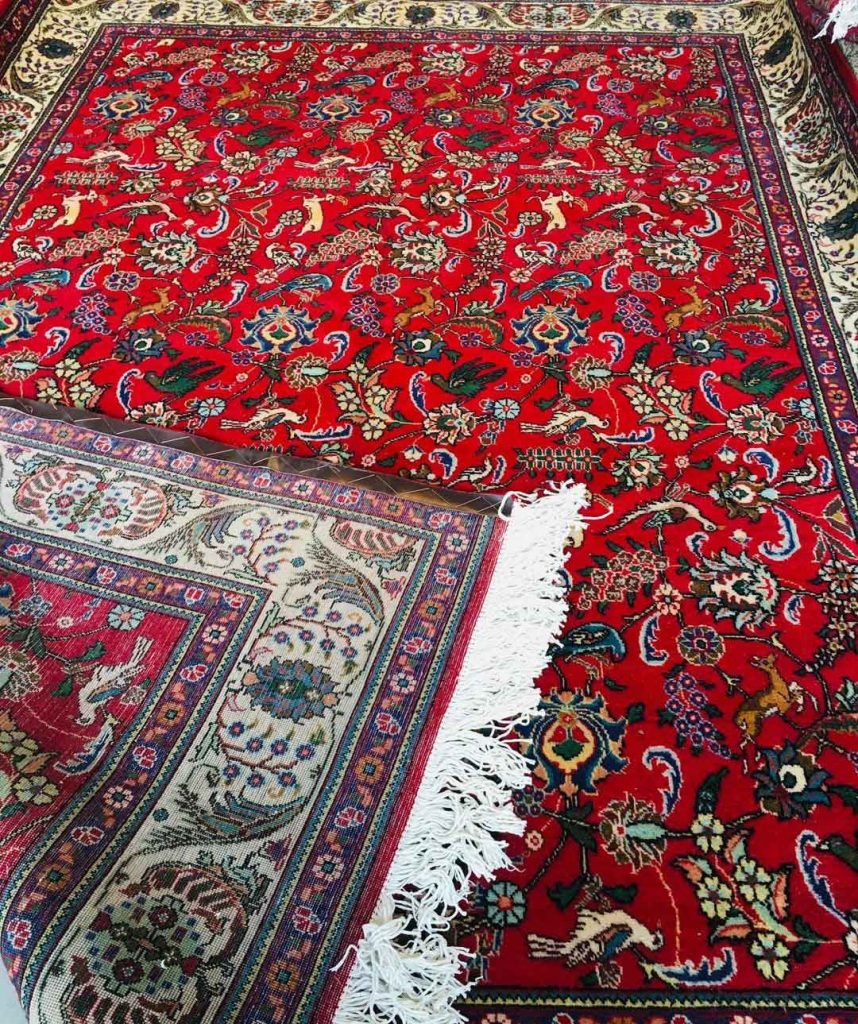
Designs of Paisley on Persian rugs
Many people may remember the design of Paisley with the beautiful cashmere of Yazd. Paisley, also known as the bent cypress, is one of the most popular and beautiful designs in a variety of Persian rug designs. Paisley is usually used in rug design with different sizes, shapes, and colors. Isfahan Qalamkar, Kurdistan or Eight Paisley, Mir Shekasteh Paisley, Lachak Taranja Paisley, and Afshari Paisley are among the most famous designs of Paisley.
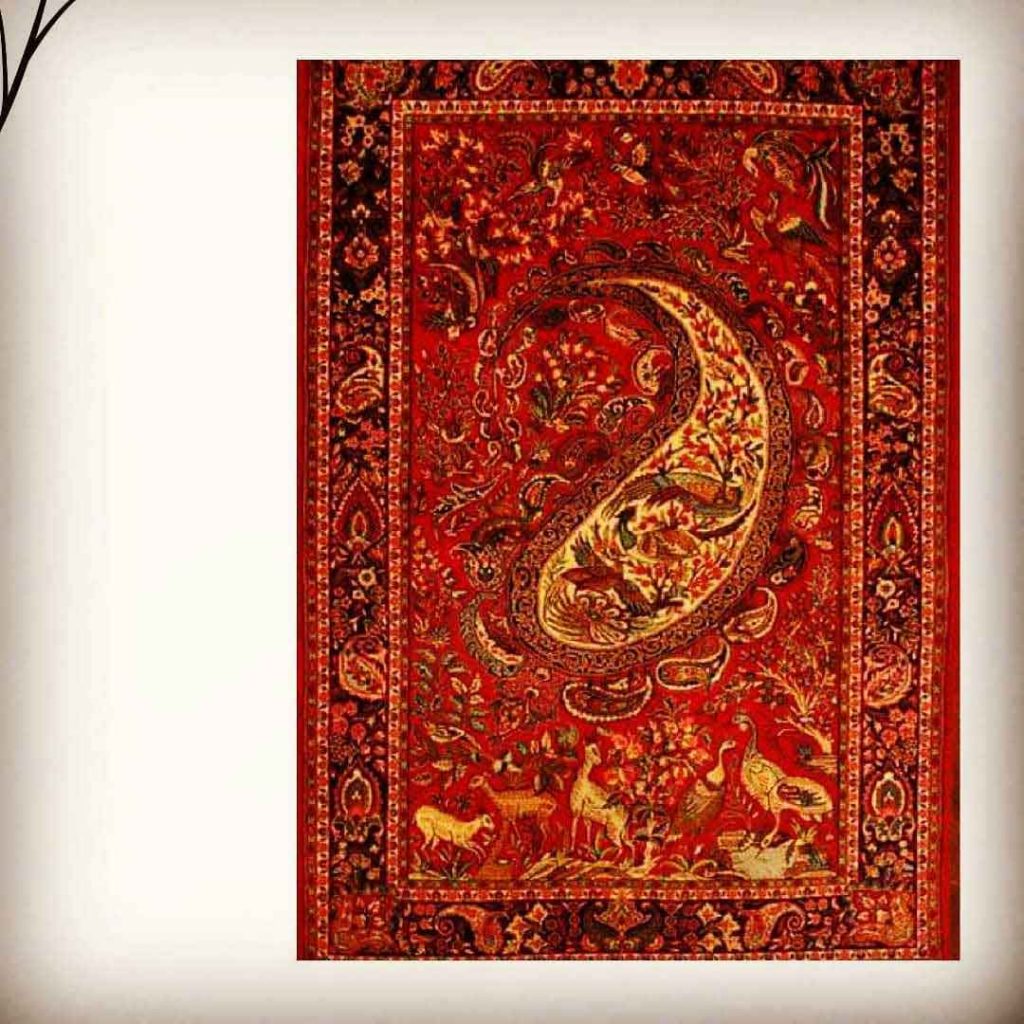
Adapted design rugs
It is said that most of the designs of this group are very similar to the rug designs of the border regions of Iran and neighboring countries and even other countries, and for this reason, they are called adaptations, such as the designs known as Caucasian and Goblen.
Tree design Persian rugs
Although in the design of the Persian rug, the basis of the work is branches and leaves, but in the tree designs, an attempt has been made to maintain a great resemblance to nature. The famous tree designs are named as follows: Animal Tree, Tree with Fountain, Tornado Tree, Cedar Tree, and Potted Tree.
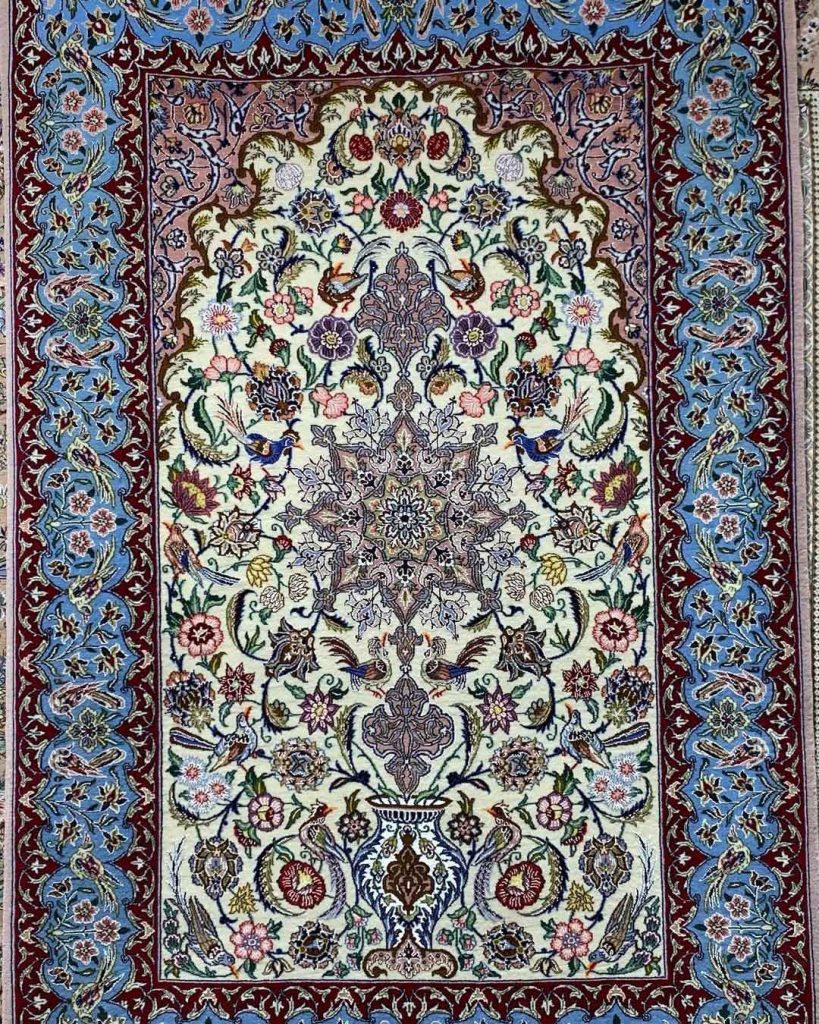
Turkmen or Bukhara design Persian rugs
The design of Turkmen Persian rugs in terms of geometry and broken lines is in line with the tribal and special designs of nomadic people, which are woven mentally and without a pattern. Yamoni frame Turkmen, Deer Eye Turkmen, Akhal Turkmen, four-frame Turkmen, Khorjini Turkmen, and Spoon Turkmen are the sub-projects of this category.

Hunting Persian rug designs
The main foundation of this group of Persian rug designs is the display of hunting scenes and hunting grounds. In such a way that in different parts of the plan, a rider is working with a device such as a bow, arrow, or spear to hunt deer or other animals. The sub-groups of this design are tree hunting ground, Toranj hunting ground, frame hunting ground, Toranj elastic hunting ground, and national hunting ground.
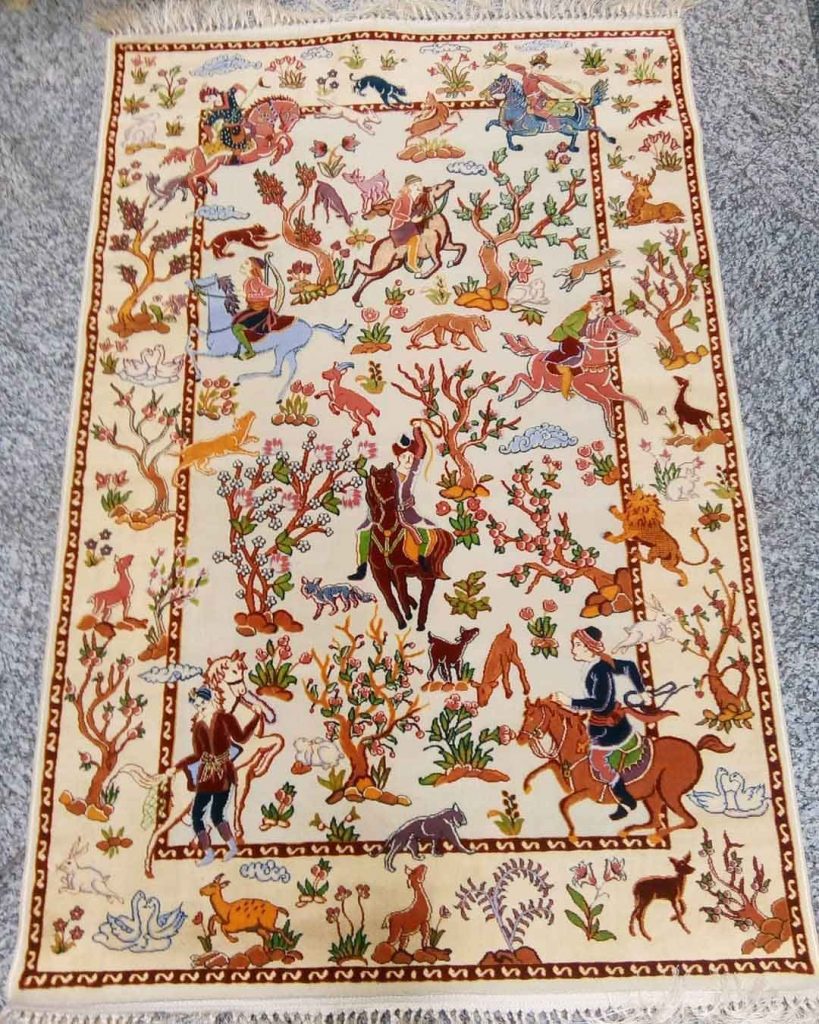
Frame design rugs (brick)
The field of the Persian rug in these designs is divided into different parts or frames that are regularly placed next to each other and inside each frame is decorated with different flowers and leaves. Its sub-groups can be called Islamic frame, Kerman Quranic frame, or column.
European Flower in Persian rug design
All designs of this group are based on natural European flowers, especially roses with very bright colors such as yellow, blue, and red. Types of European flower designs are European flower Bijar, bouquet European flower, European flower and nightingale, European flower Lechak Toranj, European flower Afshan and … .
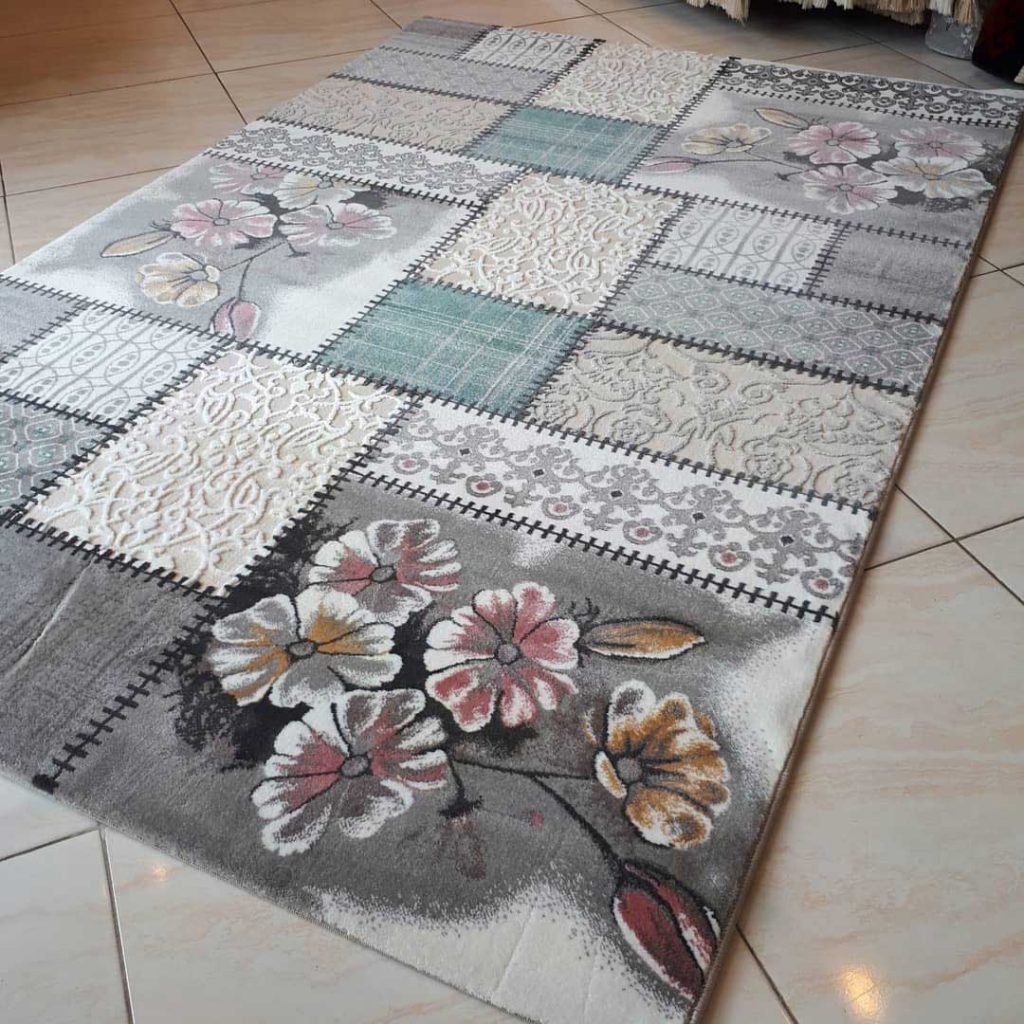
Vase Persian rug design
In the vase design, the shape of the vase is often seen in different sizes. Sometimes a large vase full of flowers covers the entire rug. Sometimes a few small pots surround the ground symmetrically around the field or in sequence. The sub-groups of this project are Khatai vase, double-sided vase, altar vase, national vase, Zol-e-Sultan vase (flower and nightingale), Haj Khatami vase, repetitive vase, Lechak Toranj vase, and one-sided vase.
Altar design in Persian Rugs
The main design in this group is based on the altar. The same place in mosques is the place of prayer for the Imam. In these designs, the altar is usually covered with decorations such as chandeliers, vases, and even small shrubs, and sometimes the two sides of the altar are shown with large columns on which the roof of the altar is located. The types of designs of this group are Qandili altar, vase altar, and tree altar.

Tangled fish in Persian rug design
The tangled fish design is one of the oldest and most common Persian rug designs in Iran. This pattern is often in the form of a pad, and the weaver repeats the same pad along the length and width of the rug. In this design or catch of a pond in the form of a rhombus with four leaves, fish is seen around it. The design of tangled fish is known by different names in different parts of Iran. The most important types are Herati fish, Farahan fish, Bee fish, and Kurdistan fish.
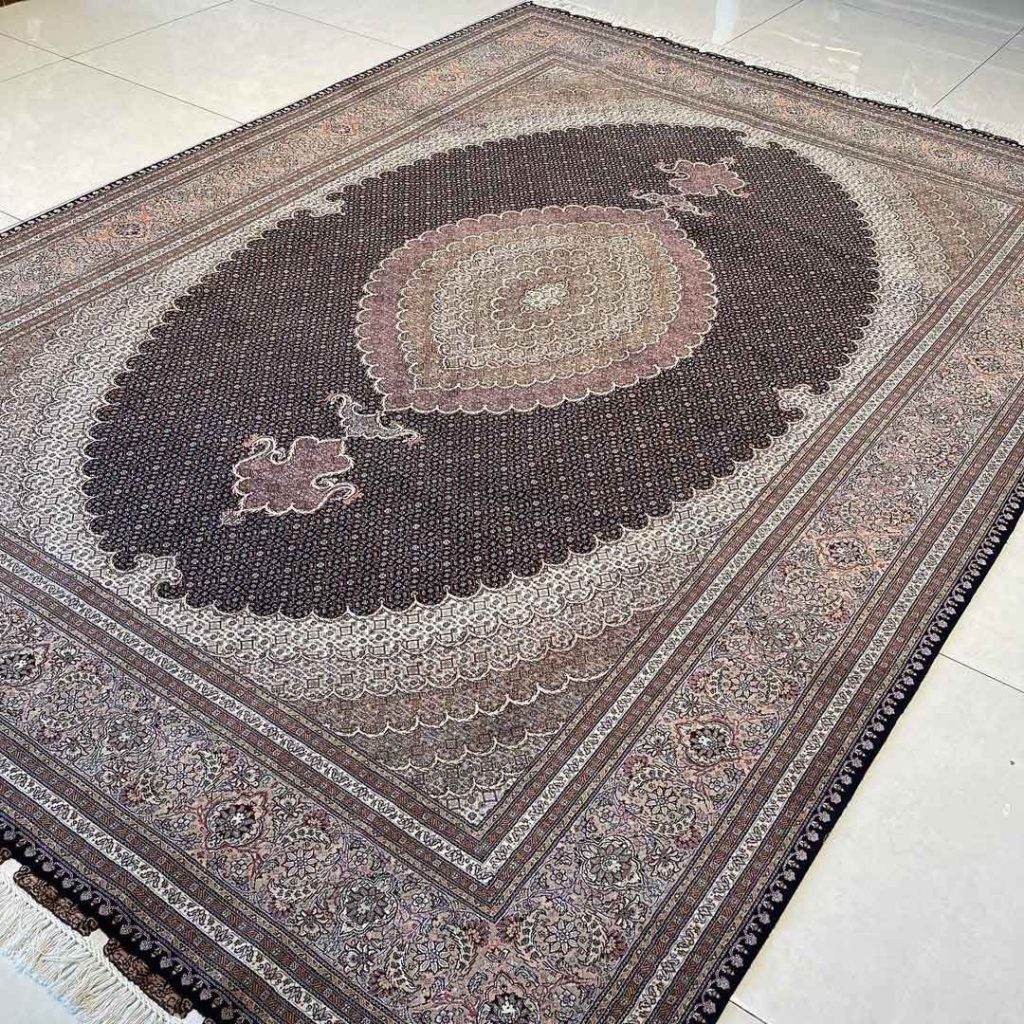
Muharram design rugs
Muharram design refers to designs in the rug that parts of a map are repeated along with the rug and the width of the rug is divided into several rows in the field and each row of the specific color and design from the beginning to the end of the rug and in a striped Is drawn. In some parts of Iran, this design of Persian rug is known as Qalmadani.
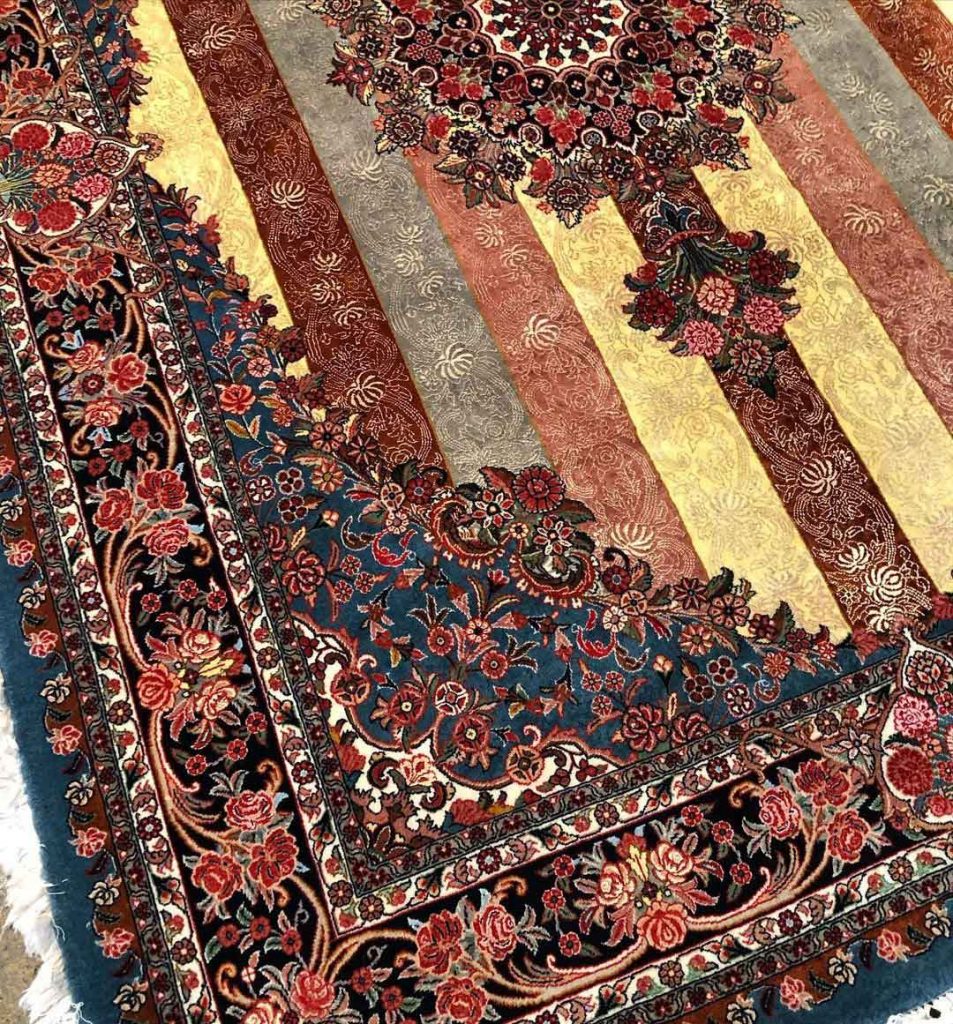
Persian rugs with geometric design
This design uses a variety of geometric shapes, usually with angled lines, and does not move in a circular or arcuate shape.
The important rug groups of this design are frame geometry, Lechak Toranj geometry, Muharram geometry, Broken branch geometry, simple floor geometry, Khataei geometry, Star geometry (mosaic), Khatam Shirazi geometry, and Joshaghani geometry.
Integrated design of Persian rugs
In addition to the above-mentioned designs, each of which has its own specific letters and has a significant history, over time, other designs have emerged from the combination of two or more designs. In the end, we should mention that the Persian rug, which has an original Iranian design and motif and is woven with natural fibers and colors, is a treasure that can not be found anywhere in the world.

